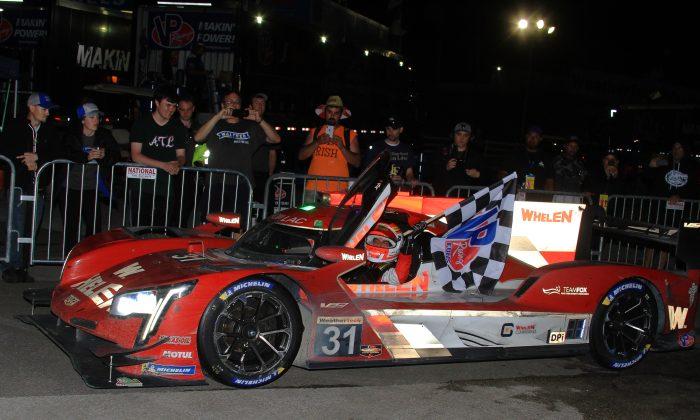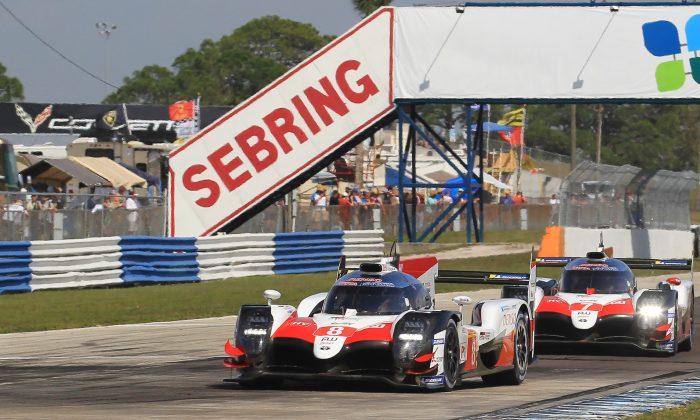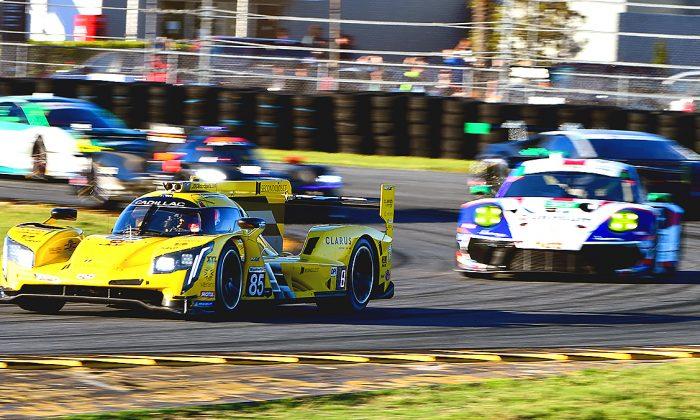SEBRING, Fla—To the great delight of sports car racing fans, the relief of sports car racing teams, the International Motor Sports Association, owner of the WeatherTech Sports Car Championship, has decided to revive the February test days at Sebring Raceway.
The winter test days, which for years had filled the void between the Rolex 24 and the Twelve Hours of Sebring, got dropped in 2014 in the merger of the American Le Mans Series and the Rolex Sports Car series which gave rise to WSCC, probably in part as a cost-saving measure for teams forced to upgrade equipment to met the regulations of the then-new series.
Two years in, with the series successful, IMSA has decided to revive the four day February test session—probably after seeing that teams were on sound financial footing, end even more so because IMSA management realized that test data collected at Daytona International Speedway’s banked oval was just about useless for the teams or the series for determining how to run the cars at every other track on the schedule.
IMSA has been improving the Weathertech Championship steadily since its 2014 debut, and this latest addition is very large improvement. WSCC cars and teams will now know how their cars perform on a real road course—the most demanding road course on the schedule. If the cars work at Sebring, they will work everywhere else the series goes.
This year the test ran from Tuesday, Feb. 23–Friday, Feb. 26. The test is divided in half, with two days devoted to support series (CTSCC, Porsche GT3 Cup, Prototype Lites) and two for the WSCC cars. The track was closed to the public for the first two days, and open for the WSCC sessions, with tickets costing $10.

Daytona Testing Alone Proved Insufficient
IMSA had tremendous problems balancing the two chassis types used in its top class for the first two years after the Rolex-ALMS merger. The lighter P2 chassis were high-downforce momentum cars while the Daytona Prototypes were heavy, high-powered brutes.
To make matters worse, both chassis types had to run on the same Continental tire. This tire had ro be hard to handle the weight and power of the DPs, which meant it was too hard for the P2s, which couldn’t get heat into to it fast enough.
This meant the DPs were quicker at the start of the race and on restarts, and once ahead of the P2s, could stay there even if they were slower on some tracks. Under ideal conditions the two chassis types could turn the same lap times, but in a race the P2s couldn’t keep up.
On top of all that IMSA had to try to balance the cars for the Sebring 12 Hours—and the rest of the season—using data from the Rolex 24 at Daytona.
The two tracks could not possibly be more different. Daytona is smooth and flat for the infield potion of the lap—but two-thirds of each lap are on the NASCAR banking smooth concrete pitched at 31 degrees, where the car run flat-out, and where centrifugal force squashes the cars’ suspension to the bump-stops.

Sebring, built on World War II airfield, is really rough—the bumpiest track on the schedule, and one of the most destructive tracks on the planet. With 17 turns ranging from a hairpin to flat-out corners with lumps which can launch a car off-line—or into a competitor.

Better Balance Through Science
IMSA seemed to finally have realized that it needed to test its cars at Sebring as well as Daytona—and the teams no doubt realized the same thing.
For the benefit of all concerned: teams, series, and most important, fans—IMSA has brought back the Sebring Winter Test.
All this test data will be pored over. Adjustments will be made—to cars, to team tactics, to Balance of Performance. IMASA, the teams, and the fans will see how well that all works out when the first practice session for the 2016 Twelve Hours of Sebring kicks off on Thursday, March 17.
The Mobil 1 Twelve Hours of Sebring Fueled by Fresh From Florida weekend actually begins on Wednesday, March 16 with practice for the support series as well as the Continental Tire Sports Car Challenge teams. The race starts at 10:40 a.m. on Saturday, March 19.
Visit the Sebring Raceway website for tickets and information.





